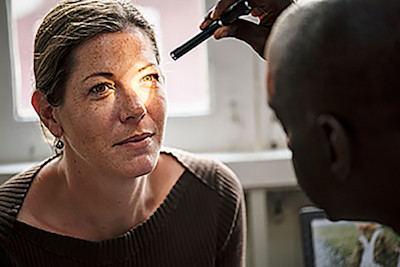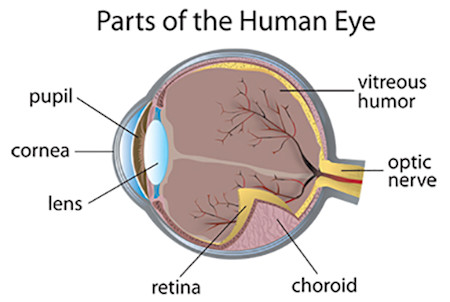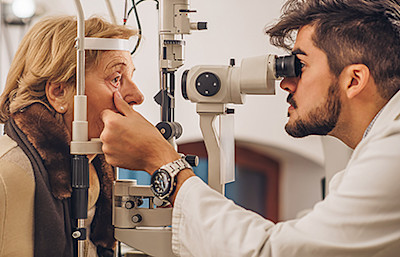Adults with eczema should watch for eye problems
Eye problems can be a fact of life for anyone living with atopic dermatitis (AD), the most common type of eczema. AD can develop on your eyelids and around your eyes, causing itchy skin and red, swollen eyes.
If your eyes have felt this way for some time, you may pay little attention to eye problems. You should. Treatment can help you feel more comfortable, and possibly save your eyesight.
Early diagnosis
Found early and treated, most eye problems linked to atopic dermatitis can be successfully treated.

Treatment can relieve eye symptoms
A board-certified dermatologist can create a custom-made treatment plan that helps your eyes feel more comfortable. Your dermatologist can also refer you to an ophthalmologist (eye doctor) if you have signs of an eye disease. Some adults who have AD have a higher risk of developing certain eye diseases.
AD may increase your risk for some eye diseases
It seems that the more severe the AD, the higher your risk of developing certain eye diseases. At least, that’s the finding from a 15-year study run in Denmark.
During this study, researchers looked at the medical records of adults in Denmark. In doing so, they discovered that those with AD had a higher risk of developing an eye infection called conjunctivitis, also known as pink eye.
Pink eye (conjunctivitis): Signs that you may have pink eye include:
Pink (or red) color to your eye
Watery, itchy eyes
Eyes sensitive to light
Wet, sticky or dry, crusty eyes
In this study, adults with AD also had a higher risk of developing the following eye diseases.
Inflamed cornea (keratitis): This eye disease occurs when the eye becomes infected or inflamed. Warning signs include your eyes feeling:
Painful or uncomfortable
Sensitive to light
As if you have something in them
Gritty
Watery
When caught early and properly treated, keratitis can often be cured.
Cornea changes shape (keratoconus)
The cornea of the eye is normally round, as shown here.
Frequently rubbing your eyes can change the shape of your cornea. As the cornea starts to change shape, it begins to bulge. It becomes cone-shaped. This change in shape can cause the following warning signs:
- Nearsightedness
- Blurry vision
- Sensitivity to light, especially when driving at night
- Constantly changing prescription for eyeglasses or contacts

Signs of keratoconus
If you have any warning signs of keratoconus, ask your eye doctor to take a close look at the shape of your cornea.

When found and treated early, you can minimize the effect this disease has on your eyesight. Unfortunately, many people who have this eye disease don’t get diagnosed early enough. That can cause loss of eyesight.
An eye for warning signs can save your eyesight
If you have AD, it’s important to play close attention to your eyes. When an eye problem lasts more than a few days, make an appointment to see your dermatologist or eye doctor.
You should also have eye exams as often as your eye doctor recommends. Ophthalmologists are the experts at diagnosing eye disease. Caught early, the eye diseases linked to AD are highly treatable.
Image
Getty Images
References
Heiting G. “Eye problems and diseases.” AllAboutVision.com. Website last accessed January 31, 2018.
Leung DYM, Eichenfield LF, et al. “Atopic dermatitis.” In: Wolff K, et al. Fitzpatrick’s dermatology in general medicine(7th edition). McGraw Hill Medical, USA, 2008:152.
Thyssen JP, Toft PB, et al. “Incidence, prevalence, and risk of selected ocular disease in adults with atopic dermatitis.” J Am Acad Dermatol. 2017; 77:280-6.
 Atopic dermatitis: More FDA-approved treatments
Atopic dermatitis: More FDA-approved treatments
 Biosimilars: 14 FAQs
Biosimilars: 14 FAQs
 How to trim your nails
How to trim your nails
 Relieve uncontrollably itchy skin
Relieve uncontrollably itchy skin
 Fade dark spots
Fade dark spots
 Untreatable razor bumps or acne?
Untreatable razor bumps or acne?
 Tattoo removal
Tattoo removal
 Scar treatment
Scar treatment
 Free materials to help raise skin cancer awareness
Free materials to help raise skin cancer awareness
 Dermatologist-approved lesson plans, activities you can use
Dermatologist-approved lesson plans, activities you can use
 Find a Dermatologist
Find a Dermatologist
 What is a dermatologist?
What is a dermatologist?